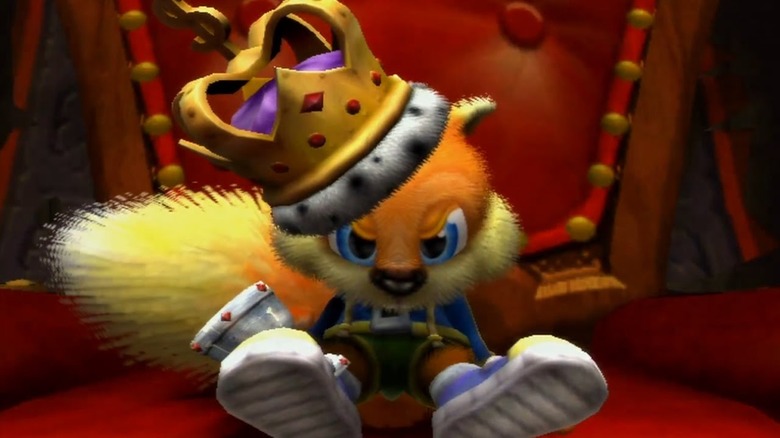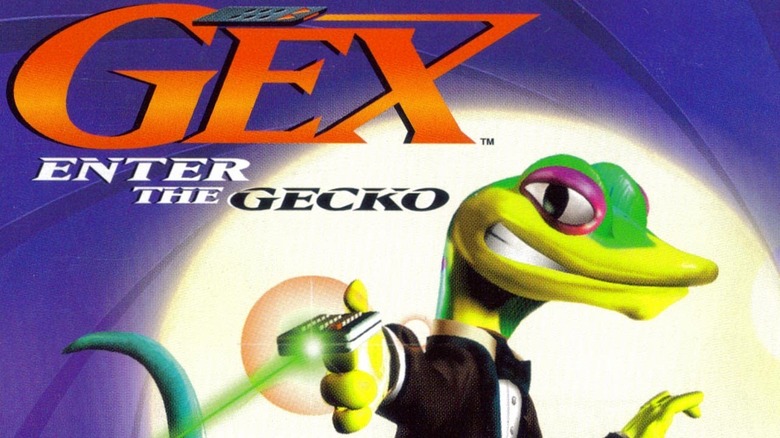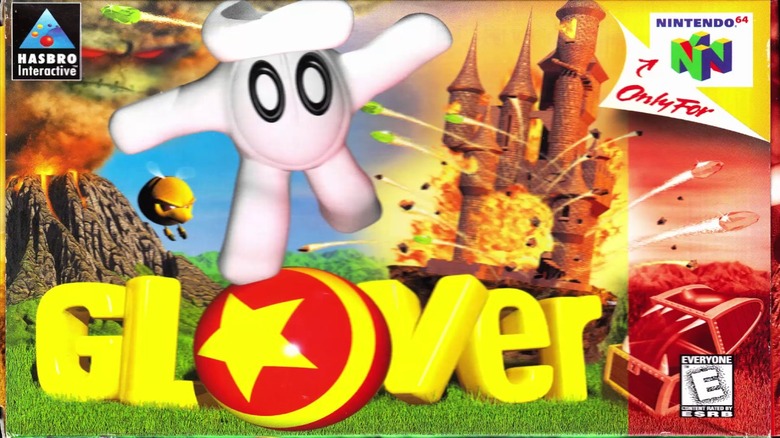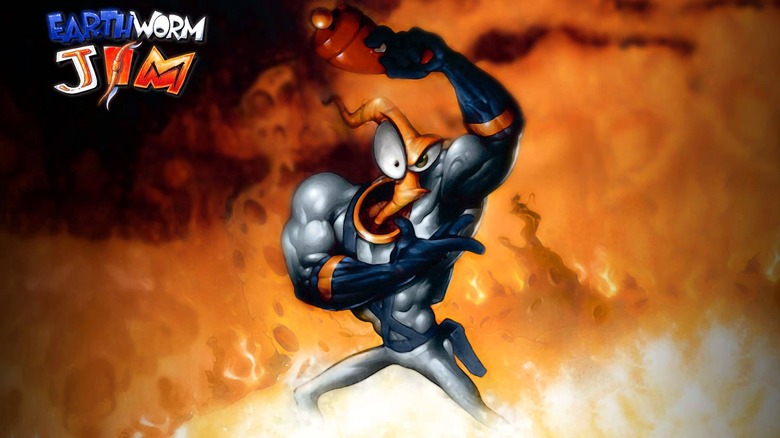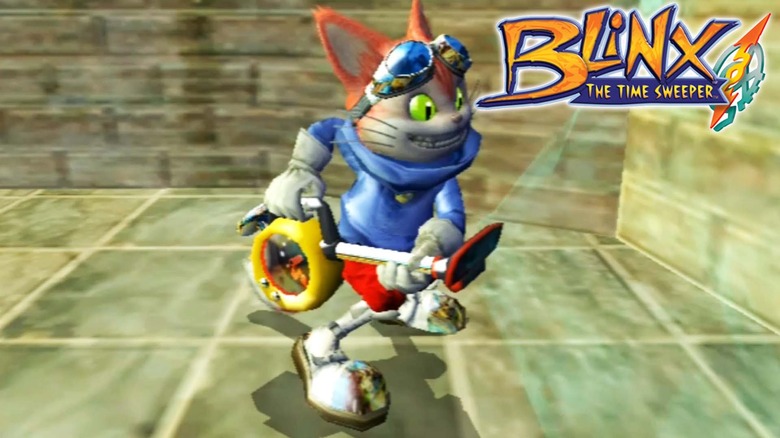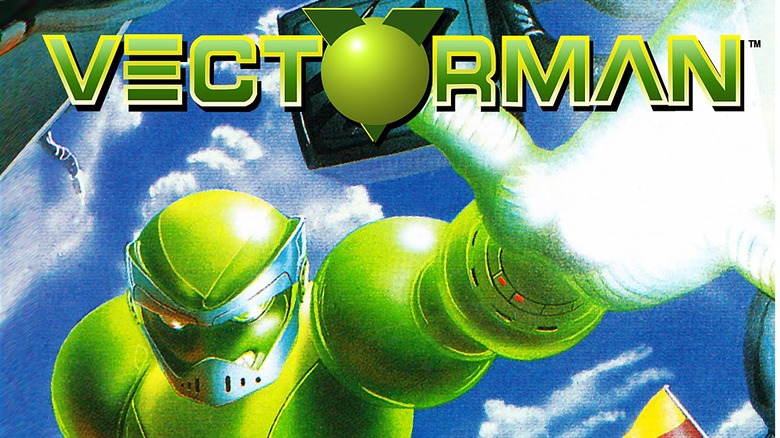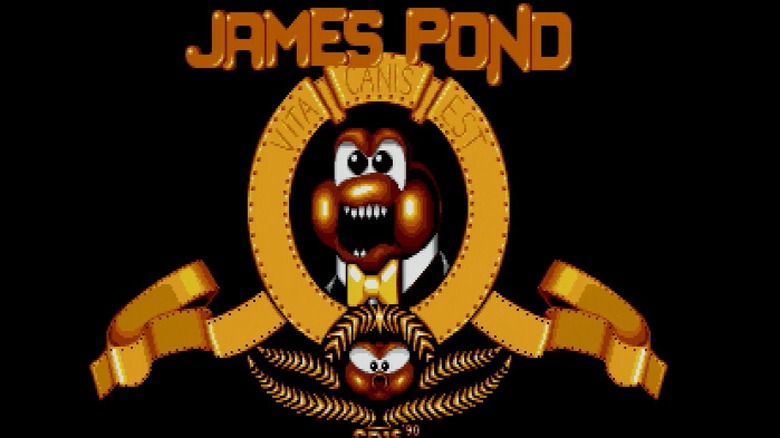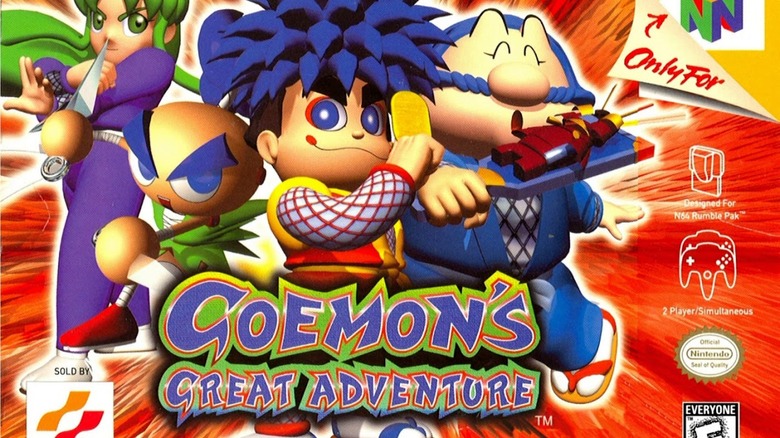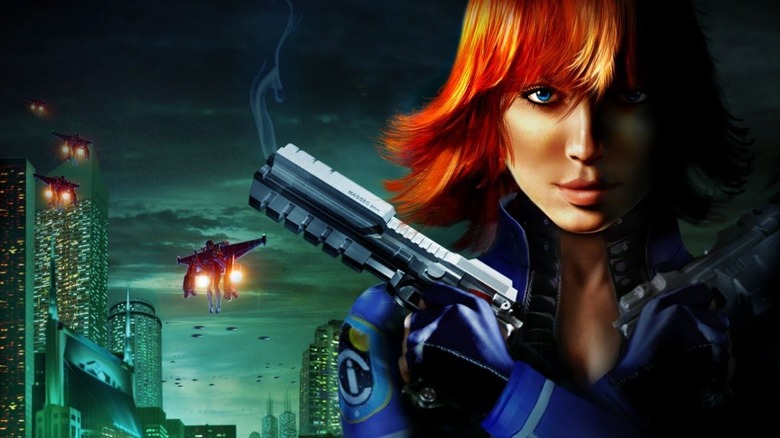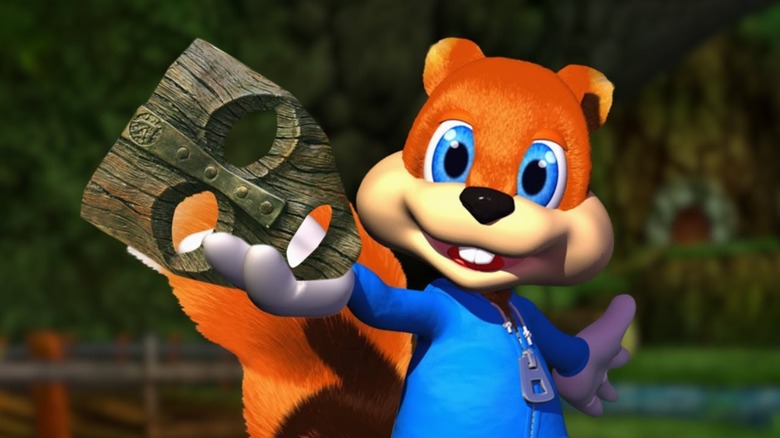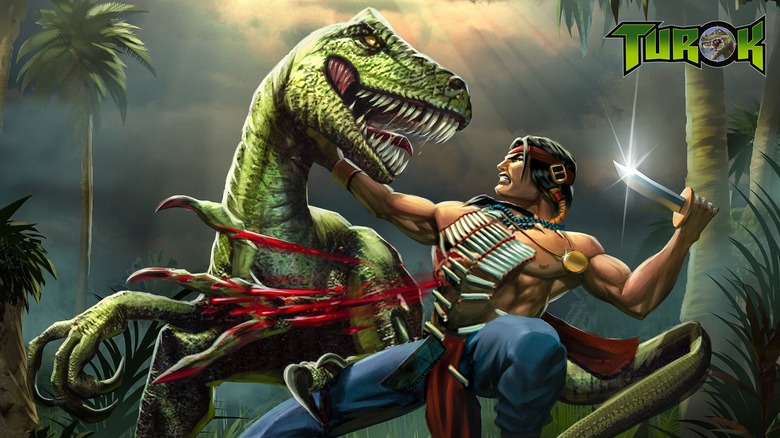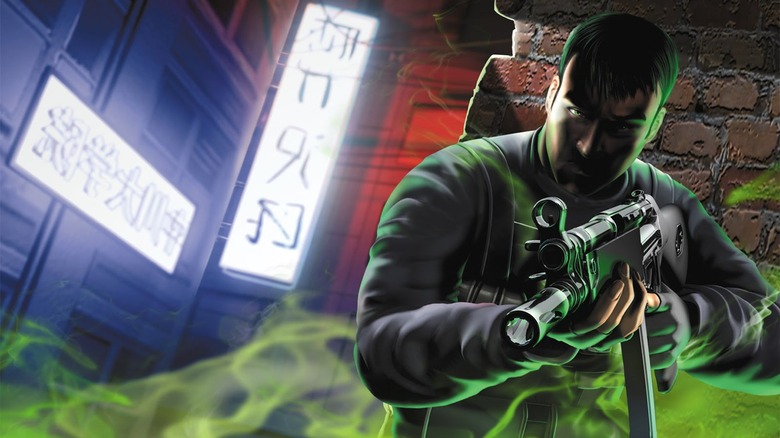Video Game Characters Who Are Still Missing Today
Back in the '90s and early 2000s, video games and mascots went together like peanut butter and jelly. If you were going to make a video game, you needed a brandable main character you could slap on posters, put in commercials, and hopefully build a series around. Everyone was doing it! You could barely open a game magazine in that era without seeing characters like Mario, Sonic the Hedgehog, or Crash Bandicoot. And at the time, it seemed hard to imagine a world where such front-facing game characters wouldn't be all over the place.
But that was then and this is now. And times have changed.
These days, the field of star video game characters has winnowed. Sure, Mario hasn't gone anywhere. Sonic is still kicking around, much to the chagrin of some. And we've seen some remaster love in the forms of games for Crash and Spyro. But there are tons of characters who've fallen by the wayside in recent years — characters who would be right at home in an article about why Hollywood doesn't cast them anymore. They may still have their fans, but when it comes to landing new gigs, the phone just isn't ringing.
Here's our list of video game characters who are now missing from the spotlight.
Gex
What do you get when you cross a TV-loving gecko, a Simpsons writer, and the original Tomb Raider engine? It's Gex, of course, who most would agree peaked in the 3D platformer Gex: Enter the Gecko.
The Gex trilogy — with the exception of some later ports — exists solely in the '90s, and is the quintessential game of that era in its experimentation and humor. Gex carried a remote control, which he used to transport himself into levels much like Mario jumped into paintings years before. The difference? The levels often parodied real-world media properties, with Simpsons writer Dana Gould not only writing Gex's lines, but also providing his voice in the game.
In another universe, Gex's run isn't canceled after Gex 3: Deep Cover Gecko in 1999. And the possibility does exist that we could see Gex sometime in the future, as Square Enix has opened up some of its dormant IPs to outside developers. But for now, we'll have to look back to older platforms for our Gex fix. We'll always have the reruns.
Glover
There may not be a game premise as bizarre as the one for 1998's Glover. Players take control of a living, breathing glove (whose name is, in fact, Glover), using his body to slap a ball through a puzzle stage until it reaches its goal. How someone could have dreamed up such a scenario is anyone's guess, though when it comes to the character itself, the game does actually explain how in the world a glove exists as a live being. But a bigger question remains at large: why does Glover only have four fingers?
Believe it or not, Glover received okay reviews. The game was slated to receive a sequel called Glover 2 in 1999, and reports are that the game was nearly complete before it was ultimately canceled. But fear not: a company called Piko Interactive obtained the rights to the Glover IP in 2017, which means the story of this sentient accessory may not be over just yet.
Earthworm Jim
In video games, the laws of science don't matter, which means a character can have the head of an earthworm and the body of a superhero. Such is the case with Earthworm Jim, who starred in several games throughout the '90s. Now, to be fair, Earthworm Jim looks the way he does thanks to what's called a "Super Suit," and it is that suit that enables much of the gameplay found in the Earthworm Jim series of games.
At their cores, the Earthworm Jim titles are 2D platformers and shooters in the vein of games like Contra. But Jim did show up in 3D in 1999's Earthworm Jim 3D, and also featured as a playable character in 1997's Clay Fighter 63 1/3.
These days, though, Earthworm Jim is hard to come by. He was all set to re-emerge in a new game called Earthworm Jim 4, which was announced in 2008. Unfortunately, we haven't heard much about that title since, which doesn't usually bode well. You can always play a port of the original – Earthworm Jim HD — on your PlayStation 3 or Xbox 360 if you need a little more Jim in your life.
Blinx
Video game characters were weird back at the turn of the century, weren't they? We've gone from remote-control-wielding geckos to four-fingered gloves to earthworms in power suits, and we now arrive at Blinx: a cat with a vacuum that controls time.
Blinx first arrived on the original Xbox in 2002's Blinx: The Time Sweeper. And it's entirely possible that, had Master Chief not blasted onto the scene with such force, we could live in a world where the Xbox brand is represented by a cat with a time-shifting Hoover. Alas, we got Halo, and Blinx wound up taking a backseat.
We haven't seen Blinx since 2004's Blinx 2: Masters of Time and Space, and it doesn't seem like Microsoft has plans to bring him back for more chrono-shenanigans. If you ever get nostalgic for the platforming found in the first Blinx game — and you happen to own your original Xbox disc — you can pop it into your Xbox One and at least relive the feline's better days. It looks like those are all you're going to get for the time being.
Vectorman
You might have been familiar with the Vectorman series growing up without ever knowing what exactly Vectorman was. Could he be a robot, or maybe some kind of alien? You likely got your answer upon playing, but in case you didn't, we'll fill you in.
Vectorman, who starred in two '90s Sega Genesis titles, was something called an orbot — a robot that is comprised of spheres. And in his two starring roles on the console, he brought run and gun shooting action set in a near-future Earth environment. Both the original 1995 game, along with its 1996 sequel, were well received by critics who praised both the game's graphics and gameplay. For a time, it looked like Sega had a solid hit series on its hands.
Strangely, though, a third Vectorman never came. A follow up to Vectorman 2 was planned but eventually canceled in 2003, and the franchise hasn't seen a new entry since.
James Pond
Could such a flagrant take on James Bond exist in the world of video games, where an amphibious fish assumes the title role and battles foes like "Doctor Maybe"? No need to consider this a hypothetical — it actually happened, thanks to the James Pond series.
Pond, James Pond first showed up on the video game stage in 1990's James Pond: Underwater Agent, a platforming game that made frequent references to the world of Ian Flemming's British spy. You'd think such a title would be a fun "why not" that wouldn't see sequels, but James Pond wound up getting several more assignments after his first. All in all, the James Pond series stretched over three games along with two spin-offs, and it actually seemed like James Pond would wind up getting a brand new game thanks to a 2013 Kickstarter.
Unfortunately, the Kickstarter — for a game called James Pond – Pond is Back! – was eventually canceled. The mudskipping spy has again gone dark.
Goemon
In Japan, the Goemon series of games was far more substantial than it was in the United States. American gamers only got to experience four games starring the blue-haired adventurer, while those in Japan got a much longer list of games that rolled from 1986 all the way until 2005. If you're reading this article in the States, the game you're most familiar with is likely 1997's Mystical Ninja Starring Goemon, a Nintendo 64 title that received positive reviews from critics.
The first N64 game's warm reception eventually led to a sequel, 1999's Goemon's Great Adventure, which brought a completely different gameplay style and more positive reviews. But after that, Goemon all but vanished in the United States.
So where is Goemon now? After a string of Japan-only releases across a number of different platforms, Goemon's star eventually faded out in 2011, with his last appearance not even coming on a game console, but instead, on a pachislot machine. It's a sad end for a series that seemed to be doing quite well for itself, and there's no indication that Goemon could get a video game revival in the future.
Joanna Dark
After GoldenEye 007 turned the first-person-shooting genre on its ear in 1997, Rare — the developer behind the game — felt compelled to create a follow up. Unfortunately, the studio wouldn't have the luxury of creating another James Bond title, as the license had been acquired by Electronic Arts. So Rare did the next best thing: it created an entirely new IP and build a new game on the GoldenEye engine. That game was 2000's Perfect Dark.
The "Dark" in the game's title references the game's protagonist, a female spy named Joanna Dark. And Joanna, along with her treasure trove of guns, gadgets, and gameplay modes, helped turn Perfect Dark into an enormous hit.
Perfect Dark won a number of awards post release, and Rare looked to have a huge new franchise on its hands. When the company was sold to Microsoft and Perfect Dark Zero was slotted as a launch title for the Xbox 360, fans were rightly excited. But while the sequel received good scores, it never caught fire the way its predecessor did. We haven't seen Joanna Dark in a new video game since 2005, and with Rare all in on Sea of Thieves, the odds aren't looking good that we will anytime soon.
Conker
It's safe to say that Rare was on its game in the '90s and early 2000s. In addition to the already-mentioned GoldenEye 007 and Perfect Dark games, Rare also had a string of hits that included all of the Donkey Kong Country titles, the Banjo Kazooie games, and one game in particular that was an absolute shock to find on a Nintendo console: Conker's Bad Fur Day.
Conker wasn't the type of video game character you'd expect to find on the Nintendo 64, not with mascots like Mario and Yoshi setting the tone. But there he was in 2001, drinking up a storm, using foul language, and wandering into enough adult-themed situations that the game earned an M rating from the ESRB. After Rare's sale to Microsoft in 2002, the game got an upgraded port in the form of 2005's Conker: Live and Reloaded for the Xbox. But since then? Very little.
Conker hasn't showed up in a game of his own since that 2005 title. He did make a guest appearance in Microsoft's Project Spark, a game creation tool that launched on the Xbox One platform. But Microsoft ended up canning that idea after its leadership reboot in 2014, leaving Conker effectively homeless.
As we already mentioned, Rare is plenty busy, so the chances of a new Conker game don't seem good right now.
Turok
When the first Turok: Dinosaur Hunter game arrived on the Nintendo 64 in 1997, it seemed to offer a lot of great things. Who wouldn't want to roam around, shoot dinosaurs, and platform up and down surprisingly vertical first-person-shooter levels? Turok's first outing was well received by critics, as was its follow up, Turok 2: Seeds of Evil, and its third entry, Turok 3: Shadow of Oblivion. Things looked pretty good for Turok and his dinosaur hunting.
Unfortunately, a prequel released in 2002 – Turok: Evolution – did not fare as well as the earlier titles. And Acclaim, the company behind the Turok games, went belly-up in 2004, leaving the Turok series in limbo.
These days, the Turok games appear to be under the control of Nightdive Studios, which has ported both Turok and Turok 2 to more modern consoles. But Nightdive looks to be tied up in its oft-delayed remake of System Shock, which means a new Turok title probably isn't in the cards right now.
Gabriel Logan
After Konami wowed us with Metal Gear Solid, and before Ubisoft brought us Splinter Cell, Sony had its own first-party action stealth title for the PlayStation called Syphon Filter. You might remember the game's signature taser, or more likely, the game's protagonist: Gabriel Logan. Logan starred in every Syphon Filter title, starting with the original in 1999 and ending with Syphon Filter: Logan's Shadow in 2010. And it seemed at one time that he would be a PlayStation mainstay — a constant presence on every Sony console, leading Sony's first-party offerings much like Master Chief does on the Xbox.
Then games like Uncharted happened. Sony started to lean more into narrative-driven action adventure titles, netting the world The Last of Us, Horizon: Zero Dawn, and more. And the studio that previously worked on most of Gabriel Logan's outings, Sony Bend, is now the team behind the upcoming Days Gone — a game that undoubtedly fits the framework of Sony's bigger hits.
Sony Bend is neck deep in development for Days Gone, with that game expected to release sometime in 2019. So the chances that you'll see Gabriel Logan again in the next few years are slim.

